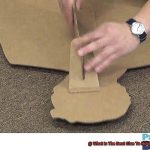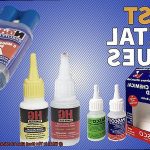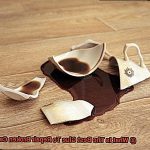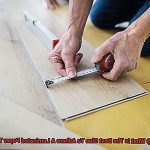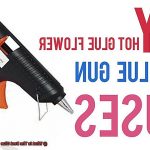Welcome to our blog post all about the best glue for repairing your air mattress.
We’ve all been there – you’re peacefully snoozing away on your air mattress, only to wake up in the middle of the night with a flat as a pancake bed. It’s a total bummer, but fear not.
We’ve got you covered with some seriously sticky solutions. In this post, we’ll explore the magical world of adhesive options, breaking down their effectiveness, ease of use, and long-lasting power.
So whether you’re gearing up for an epic camping adventure or just want to keep your trusty air mattress going strong, stick around (pun intended) to find out which glue is the ultimate fix-it miracle.
What is an Air Mattress?
Contents
An air mattress, also known as an inflatable mattress or airbed, is a portable and customizable bedding option that offers both comfort and convenience. Unlike traditional mattresses made of foam or springs, an air mattress is filled with air, allowing users to adjust the firmness level according to their preferences. Whether you’re going camping, hosting guests, or need a temporary bedding solution, an air mattress can be your go-to option. In this guide, we will explore the features, benefits, and maintenance tips for air mattresses.
Features and Benefits of Air Mattresses:
- Customizable Firmness: With multiple air chambers or compartments that can be inflated or deflated, air mattresses allow users to find their desired level of firmness for optimal comfort.
- Portability: Air mattresses can be easily folded or rolled up when not in use, making them convenient for storage and transportation.
- Versatility: Available in various sizes and heights, air mattresses can accommodate different sleeping arrangements and preferences.
- Comfort: When properly inflated, air mattresses provide good support and pressure relief. Some models even come with built-in features like pillow tops or memory foam layers for added comfort.
- Space-Saving: Ideal for those with limited space or frequent moves, air mattresses offer a compact and easy-to-store bedding solution.
Maintenance and Care Tips:
- Regular Inspections: Check for punctures or leaks by inflating the mattress and listening for hissing sounds or feeling for escaping air.
- Proper Storage: When not in use, store the air mattress in a dry and clean area to prevent damage.
- Cleaning: Follow the manufacturer’s instructions for cleaning the mattress. Most air mattresses can be wiped down with a damp cloth and mild soap.
- Repairing Punctures or Leaks: Use appropriate repair methods such as adhesive patches or glues designed specifically for air mattress repairs.
- Proper Inflation: Avoid over-inflating or under-inflating the mattress, as it can affect comfort and durability.
Types of Glue Available for Repairing an Air Mattress
Repairing an air mattress requires the right glue to ensure a quick and effective fix. With numerous options available, it can be challenging to determine which glue is best suited for the job. In this article, we will explore five types of glue suitable for air mattress repairs, their unique properties, and how to select the most suitable one.
PVC Glue – The Powerhouse Adhesive:
For larger tears or punctures, PVC glue is the go-to adhesive. Engineered specifically for bonding PVC materials, it provides a strong and durable hold. Its resilience allows it to withstand the pressure and stress exerted on an air mattress, ensuring a long-lasting repair.
Rubber Cement – Flexibility at Its Finest:
When dealing with smaller tears or punctures, rubber cement is the ideal choice. Known for its flexibility and effective bonding of rubber materials, it provides a reliable and durable repair solution. Its ease of application and quick drying time make it a convenient option for emergency repairs.
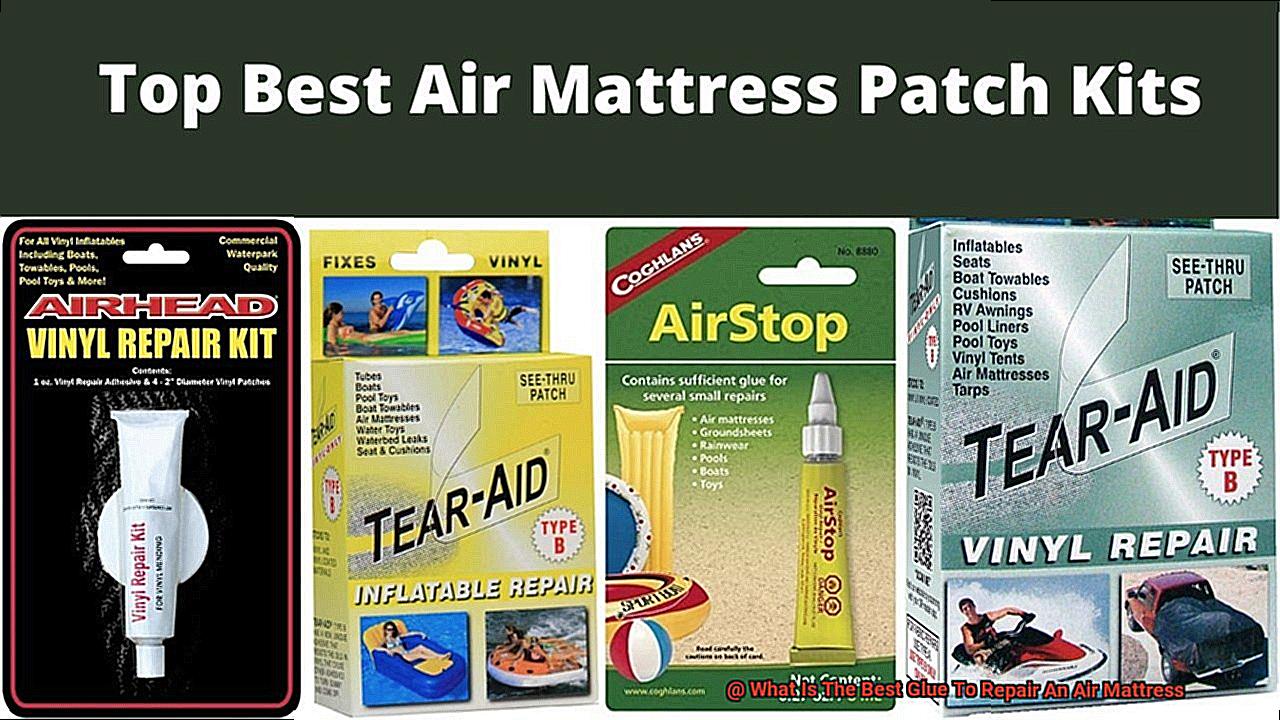
Epoxy Adhesive – Mighty and Versatile:
Epoxy adhesive comes to the rescue when repairing leaks or cracks in the seams of an air mattress. Composed of two components that must be mixed before application, epoxy creates a formidable bond capable of withstanding high pressure and tension. It excels at repairing those hard-to-fix areas.
Contact Cement – The Instant Fixer:
If you require an instant bond, look no further than contact cement. This fast-drying adhesive forms an immediate bond when two surfaces are pressed together. Its versatility extends to various materials, including PVC and rubber. However, precise application is crucial as contact cement does not allow repositioning once the surfaces are joined.
Specialized Adhesives – Tailor-Made for Air Mattresses:
For an adhesive specifically formulated for air mattress repairs, consider specialized adhesives. These products are designed to bond well with the unique materials used in air mattresses, such as vinyl or nylon. They may possess additional features like waterproof properties or UV resistance, ensuring a reliable and long-lasting repair.
PVC Glue
Look no further. In this comprehensive guide, we will take you through the step-by-step process of using PVC glue to repair your air mattress. With the right techniques and materials, you can easily fix those annoying punctures and tears and enjoy a comfortable night’s sleep once again.
Step 1: Prepare the Area
Before applying PVC glue, it’s crucial to clean the affected area thoroughly. Use a mild detergent and warm water to remove any dirt or debris. Ensure that the area is completely dry before proceeding.
Step 2: Select the Right PVC Glue
Not all PVC glues are created equal. Choose a glue specifically designed for flexible materials or vinyl repairs. Popular brands like Gorilla Glue, Oatey, or IPS Weld-On offer formulas with excellent adhesion properties on soft and pliable surfaces.
Step 3: Apply the Glue
Apply a thin layer of PVC glue to both sides of the tear or puncture using a brush or applicator. Avoid using excessive amounts of glue, as this can lead to messy results. Ensure that the glue is evenly distributed and provides full coverage.
Step 4: Press and Hold
After applying the glue, firmly press the two surfaces together. Hold them in place for a few minutes to allow the glue to create a strong bond. This step is crucial for ensuring a proper seal.
Step 5: Let It Cure
Allow the glued area to cure for at least 24 hours before inflating the mattress again. This ensures that the adhesive has fully bonded and dried, providing a long-lasting repair.
Using PVC glue is an effective and simple way to repair your air mattress. By following these steps and using the right type of glue, you can fix those annoying punctures and tears, extending the lifespan of your mattress. Don’t let a deflated air mattress ruin your sleep. Grab some PVC glue and get ready for a good night’s rest.
Vinyl Repair Kit
A vinyl repair kit is the ultimate solution for anyone tired of midnight air mattress deflation. No one wants to wake up sinking into their deflating mattress, but with a vinyl repair kit, this common problem can easily be fixed. These kits are specifically designed to mend tears, punctures, and leaks in vinyl materials, making them an essential tool for any air mattress owner.
When selecting a vinyl repair kit, it is crucial to choose one specifically designed for vinyl materials. Vinyl has unique properties that require a special adhesive glue to create a strong and durable repair. Opting for a generic repair kit may result in a less secure fix and potential reoccurrence of the problem.
Fortunately, there are several top-quality brands of vinyl repair kits on the market that have been tried and tested by countless satisfied customers. Tear-Aid, Gorilla Clear Repair Tape, and 3M Marine Adhesive Sealant are just a few examples. These kits typically include adhesive glue, patches, and other materials necessary for successful repairs.
Using a vinyl repair kit effectively is a simple process. Start by thoroughly cleaning and drying the damaged area to ensure a strong bond between the patch and the vinyl material. Next, apply the adhesive glue evenly and smoothly onto both the patch and the damaged area. It is essential to allow the glue to dry completely before using your air mattress again.
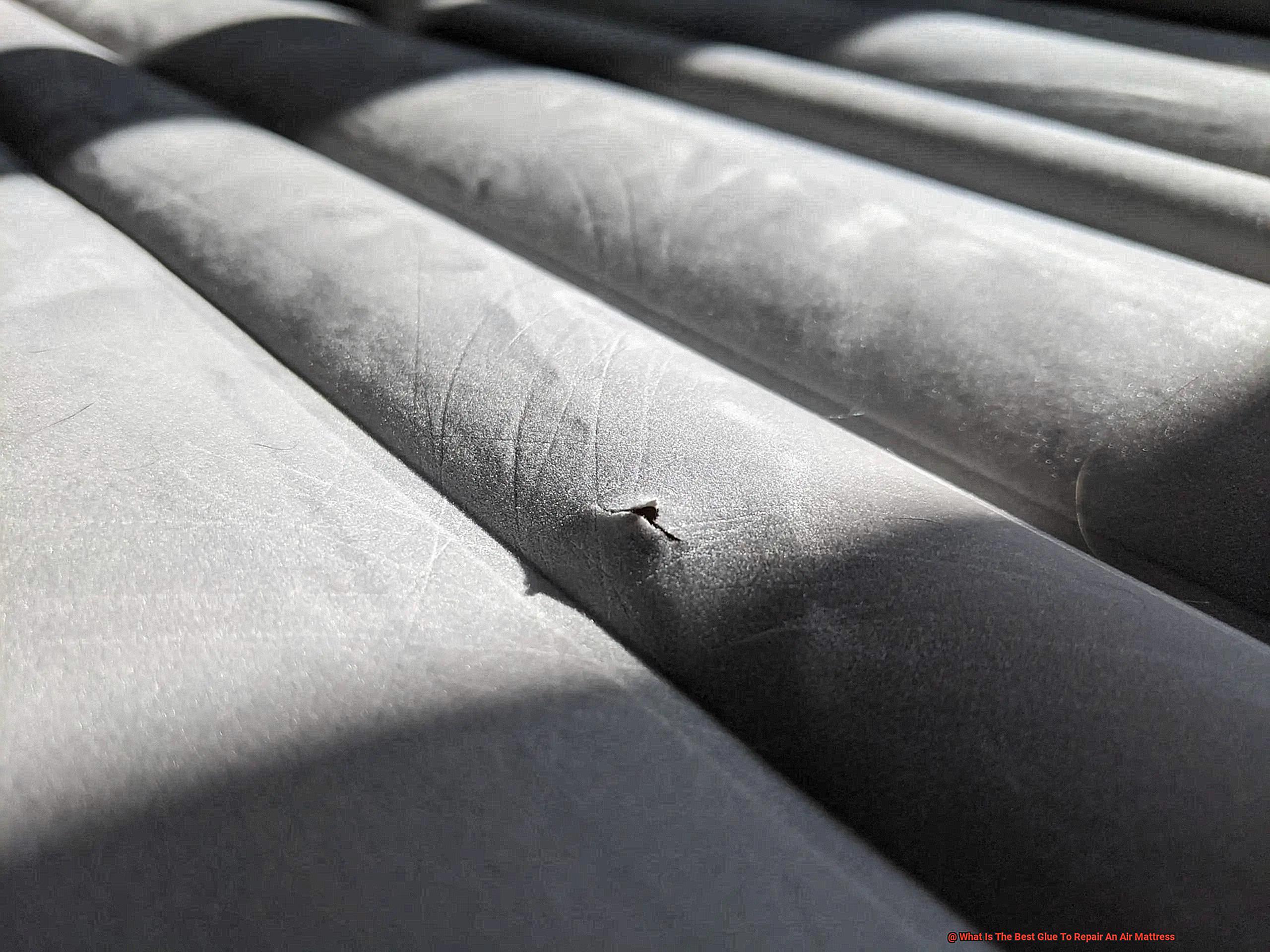
Depending on the size and severity of the damage, multiple patches or layers of adhesive glue may be required for a secure repair. Follow the instructions provided with your vinyl repair kit carefully to ensure proper application and maximum effectiveness.
Once your repair is complete, exercise patience and allow sufficient time for the adhesive glue to fully cure before inflating and using your air mattress again. Rushing this step could compromise the integrity of the repair and lead to further issues down the line.
Contact Cement
We’ve all been there, and it’s not a pleasant experience. But fear not. There is a solution to this annoying problem, and it comes in the form of contact cement.
Contact cement, a solvent-based adhesive, is a versatile and powerful bonding agent that is perfect for repairing air mattresses. It forms a strong and durable connection between different materials, such as PVC, vinyl, rubber, and other synthetics commonly used in air mattresses. Say goodbye to punctures, tears, or leaks – contact cement can effectively adhere to them all.
One of the standout features of contact cement is its quick drying time. Within minutes of applying the adhesive to both surfaces, the solvent evaporates and creates a firm bond. Gone are the days of waiting for hours or overnight for repairs to set. However, remember that pressure is crucial during the drying process. Press the surfaces firmly together and use clamps or heavy objects to maintain pressure until the adhesive fully cures.
Applying contact cement is a breeze with the right procedure. Start by cleaning the surfaces to be bonded and eliminating any debris or dust. Apply a thin and even layer of contact cement using a brush or roller. Wait a few minutes until it becomes tacky to the touch. Finally, align the two surfaces and press them together firmly, ensuring even pressure across the entire repair area.
When choosing contact cement for air mattress repair, opt for a high-quality product specifically designed for this purpose. Look for waterproof and flexible options that will maintain your air mattress’s integrity.
Epoxy Resin
Step 1: Cleanliness is Key
Before embarking on your repair mission, take charge of cleanliness. Rid the damaged area of dirt, dust, and debris that could sabotage the adhesive’s effectiveness. A pristine surface ensures a robust bond and a successful repair.
Step 2: Mix it Right
Epoxy resin is a dynamic duo – a resin and a hardener. Follow the manufacturer’s instructions to marry them in perfect proportions. This alchemical union activates the adhesive properties and lays the groundwork for an unbreakable repair.
Step 3: Apply with Precision
With your epoxy resin mixed to perfection, it’s time to wield your adhesive weapon. Spread it evenly across the damaged area, leaving no inch untouched. For surgical precision, arm yourself with a small brush or spatula. Remember, even distribution is the key to a watertight seal that fends off future leaks.
Step 4: Give it Time
Patience becomes your ally as you wait for your epoxy resin to work its magic. Allow ample time for the adhesive to cure and harden. Different products have varying drying times, so heed the manufacturer’s instructions. During this period of anticipation, treat the repaired area like royalty – no contact or pressure allowed – to ensure a steadfast bond.
Step 5: Embrace Restful Nights
Congratulations. Your air mattress is resurrected and ready to cradle you in nights of blissful slumber. Epoxy resin forms an unyielding, waterproof alliance that laughs in the face of pressure, movement, and wear and tear. So go forth, inflate that mattress, and sleep soundly, knowing it’s got your back.
Super Glue
Unveiling the captivating world of Super Glue, an adhesive superhero that can rescue your deflated air mattress during those memorable camping trips. Known as cyanoacrylate adhesive, Super Glue is a fast-acting and versatile adhesive with a plethora of uses.
When it comes to repairing small tears or holes in your air mattress, Super Glue shines like a beacon of hope. However, success lies in following a few crucial steps. Begin by ensuring the surface is clean and dry. Any lingering dirt or moisture can hinder the glue’s bonding properties. Once prepped, apply the Super Glue in thin layers, allowing each layer to dry completely before adding another. This meticulous technique guarantees a robust and secure bond.
Nevertheless, it’s important to recognize that while Super Glue can temporarily mend minor damage, it may not be suitable for larger or more substantial tears. The constant pressure and movement an air mattress endures can strain the repaired area, potentially leading to re-opening or future leaks. In such cases, exploring alternative options is advisable.
Ventilation is also a vital consideration when working with Super Glue. As this adhesive undergoes the curing process, it releases fumes. To ensure safety and comfort, operate in a well-ventilated area or take your repairs outdoors.
Factors to Consider When Choosing the Best Glue for Repairing an Air Mattress
Repairing an air mattress requires choosing the right glue for the job. The following factors should be considered when selecting the best glue for repairing an air mattress:
- Material compatibility: Ensure that the glue is compatible with the material of your air mattress, such as PVC or vinyl. Using the wrong type of glue can result in weak bonds or damage to your mattress.
- Strength and durability: Look for glues with high tensile strength and long-lasting adhesive properties to ensure a strong and durable bond that can withstand regular use.
- Quick curing time: Opt for a glue with a fast drying time, allowing you to quickly use your air mattress after repair.
- Waterproof properties: Choose a glue that is waterproof to prevent water from seeping into the repaired area, especially if you plan to use the air mattress outdoors or near water bodies.
- Flexibility: Air mattresses are designed to be flexible and adjustable, so select a glue that can handle movement without losing its adhesive strength.
- Ease of application: Look for glues with user-friendly applicators, such as squeeze tubes or brush caps, to ensure accurate and even application.
- Availability and cost: Choose a glue that is readily available in stores or online, and consider its cost to fit within your budget without compromising quality.
Conclusion
In conclusion, the quest for the perfect glue to mend your deflated air mattress may seem like a daunting task. But fear not. A restful and uninterrupted night’s sleep is within reach. Throughout this blog post, we’ve delved into a multitude of glue options that are tailor-made for air mattress repairs.
When it comes to those larger tears or punctures, PVC glue reigns supreme. Its robust and unyielding grip on PVC materials ensures a durable fix that won’t let you down. On the other hand, if you’re dealing with smaller tears or punctures, rubber cement is your go-to adhesive. Its flexibility and knack for bonding rubber materials make it an ideal choice.
But what about those pesky leaks or cracks in the seams? Fear not, for epoxy adhesive is here to save the day. With its formidable bond capable of withstanding high pressure and tension, it will patch up any weaknesses in your air mattress without breaking a sweat.
For emergency repairs that require an instant bond, look no further than contact cement. While precise application is essential, its quick-drying nature makes it perfect for those urgent fixes. And let’s not forget about specialized adhesives designed specifically for air mattresses. These gems offer additional features like waterproof properties or UV resistance, adding an extra layer of protection to your beloved inflatable bed.
When selecting the best glue for your air mattress repair job, keep in mind various factors such as material compatibility, strength and durability, quick curing time, waterproof properties, flexibility, ease of application, availability, and cost. By considering these elements and employing proper techniques, you’ll be well-equipped to tackle any annoying punctures or tears that come your way.
So don’t let a deflated air mattress deflate your spirits. Grab the finest glue suited to your needs and prepare yourself for a rejuvenating night’s rest.


